Measured Tones
-
Ships in 1 to 2 weeks
Details
Description
SKU: CF.FAS98
Composed by Alan Lee Silva. First-Plus String Orchestra (FAS). Set of Score and Parts. With Standard notation. 8+8+5+5+2+5+3+8 pages. Duration 3 minutes, 3 seconds. Carl Fischer Music #FAS98. Published by Carl Fischer Music (CF.FAS98).ISBN 9781491143063. UPC: 680160900565. Key: E minor.
With lyrical, scalar melodies in E minor, flowing and intuitive phrases, and main themes circulated throughout the orchestra, Measured Tones provides each section of the ensemble with exciting musical challenges and ample opportunities to shine. Everything you have come to expect from composer Alan Lee Silva.
With lyrical, scalar melodies in E minor, flowing and intuitive phrases, and main themes circulated throughout the orchestra, Measured Tones provides each section of the ensemble with exciting musical challenges and ample opportunities to shine. The AAB form (each section an eight-measure phrase) begins with the A-section immediately in m. 1 with the high strings announcing the melody. The low strings take over the second A-section in m. 9, accompanied lightly by sustains and countermelodies in the upper strings. Written with a modal influence, the A-section themes twist and bend over an E pedal.The dynamic contour gradually builds, and the harmony lands with gusto and a feeling of resolution on the flat-sixth major triad in m. 18. The majestic B-section begins here and Violin 1 soars with the lyrical melody, joined a sixth below by Violin 2 and Viola. Legato, resonating roots in the low strings create a sonorous and solid foundation in the B-sections.A short, quiet four-measure interlude in mm. 26–29 allows a breath before starting the form again; this time just one A-section (mm. 30–39), and then it crescendos back to the B-section(mm. 40–50). There is a slight harmonic change in m. 48 where the melody deviates from the natural minor; C≥ is the key pitch here. Another interlude in mm. 51–55 begins with a quiet phrase and builds dramatically with ascending diatonic scales in the high strings and descending lines in the low strings.The B-section recurs resplendently in mm. 56–63 with a maestoso quality and a slightly slower tempo, highlighted by espressivo violins and violas and rich, sustained low strings. In mm. 64–69, the piece intensifies by going to a lower dynamic and it continues with ascending diatonic scale motifs in the upper strings over an E pedal in the lower strings. A reiteration of the ascending E-minor scale concept in the high strings and a descending E-minor scale pattern in the low strings in m. 70 leads to a thrilling close. The repeated unison ensemble sixteenth notes and the fortissimo final hit finish the piece with great impact.
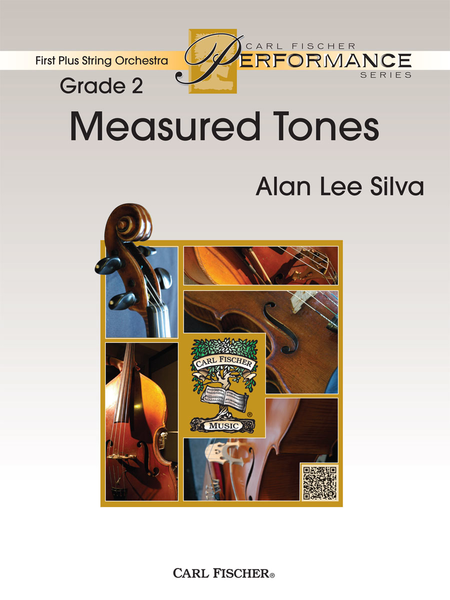
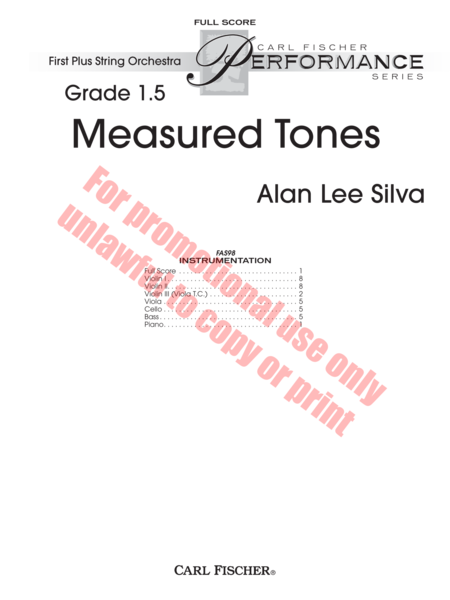
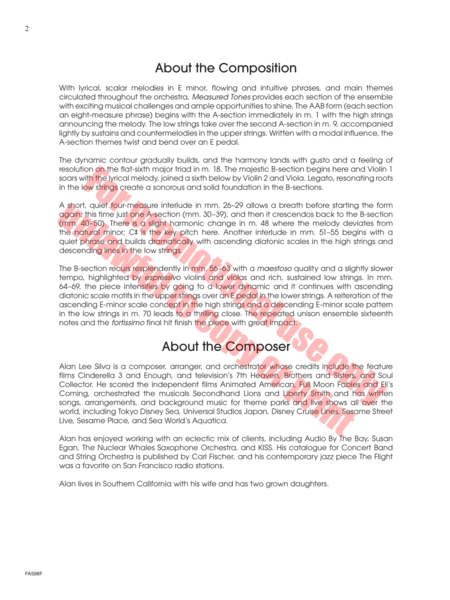
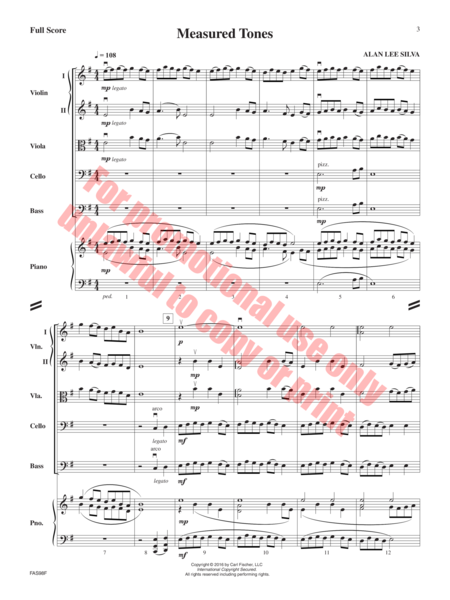
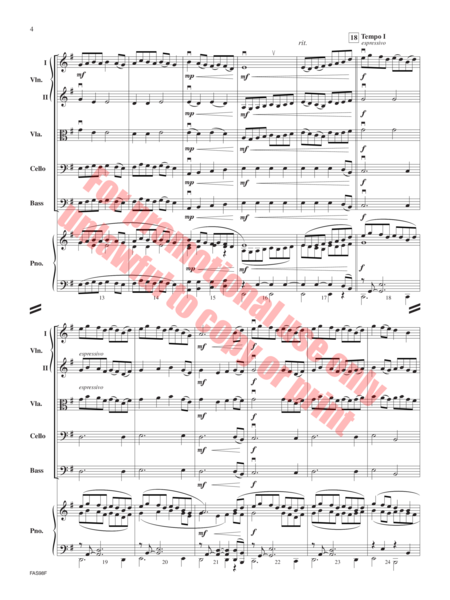

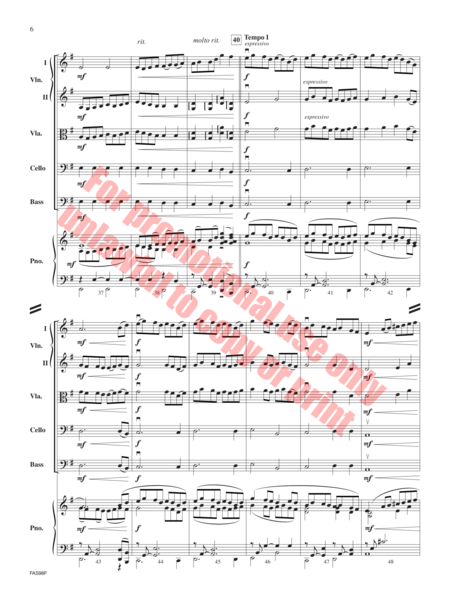
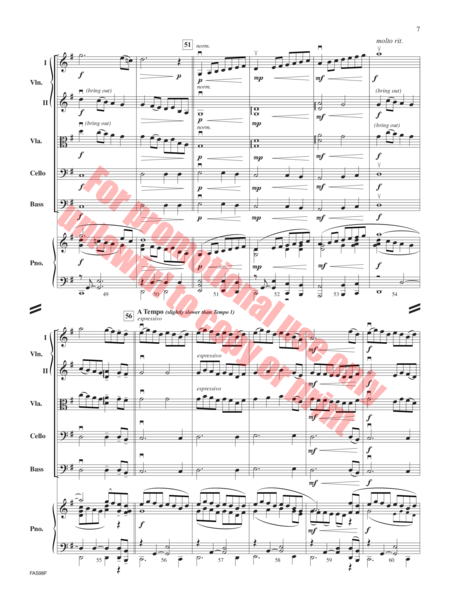
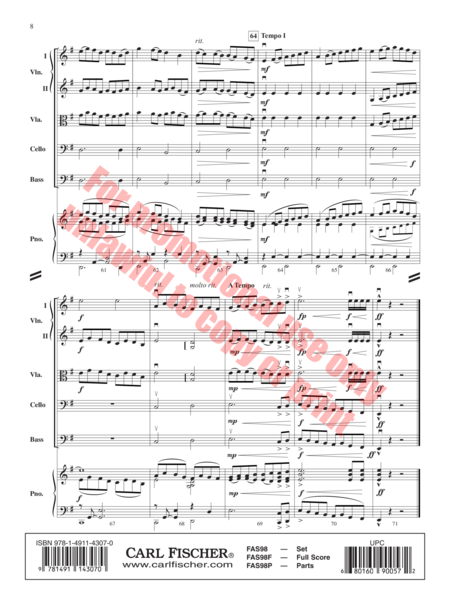
 Share
Share